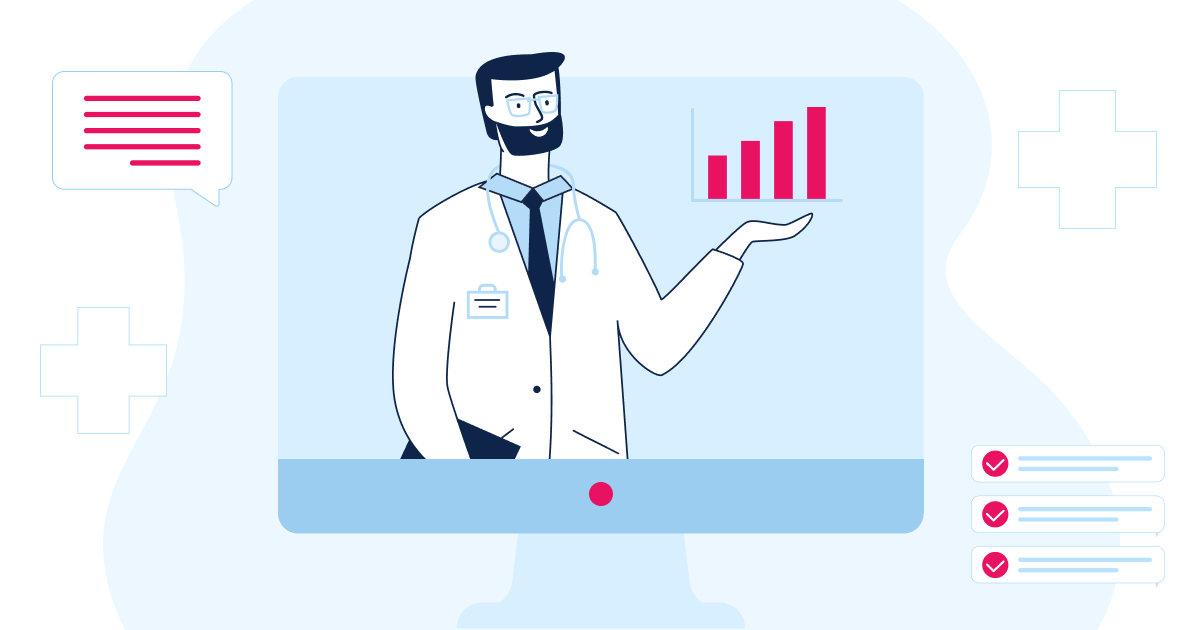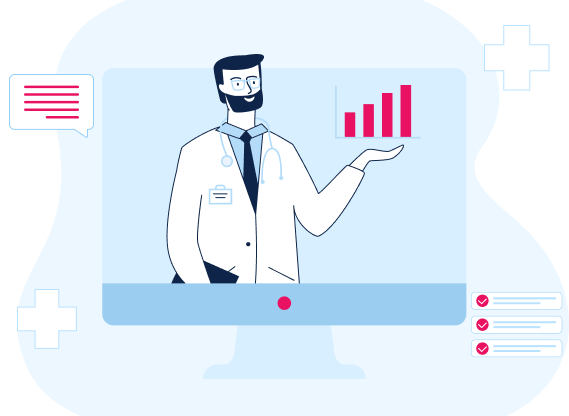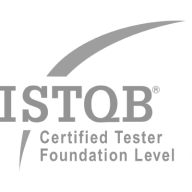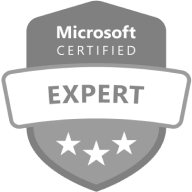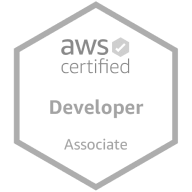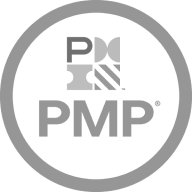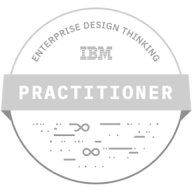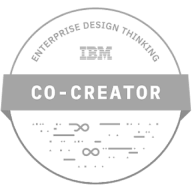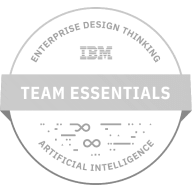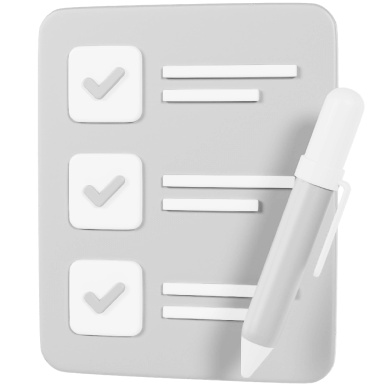
Want to know more? — Subscribe
Healthcare providers and facilities must access various electronic systems to view relevant patient records and documents. It can be challenging, given that health data usually spreads across multiple hospitals and comes in different formats.
Yet, you can tackle these issues if you integrate an HL7 interface. Health Level Seven (HL7) is a collection of formatting standards and guidelines designed to assist healthcare providers in transmitting and sharing data. Want to learn more about its integration? Read this Softermii's guide.
Our company often uses HL7 interface standards in the development of healthcare products. Following those standards, we delivered our apps like HIPAA Telmed, MedRealtime, and InfoMed Telehealth, and we can share relevant expertise with you.
So read on to fully comprehend HL7 significance, how it works, why systems need HL7 data integration, how to integrate an HL7 with APIs and the benefits of HL7 in healthcare.
Why Is HL7 Integration Needed in Healthcare?
Healthcare providers use software and electronic systems to perform various activities such as billing, medical records maintenance, telehealth, and patient records updates.
Such software may include the following:
- Hospital information system (HIS)
- Electronic medical record (EMR)
- Electronic health record (EHR)
- Lab information system (LIS)
- Radiology information system (RIS)
- Picture archiving and communication system (PACS)
All software solutions above communicate in different languages and formats, making data collection a complex process. As a result, HL7's mandatory guidelines are necessary to ensure that data can be easily incorporated through healthcare systems.
By having a shared and common language in terms of content and structures for clinical classes, the value of electronic health records (EHRs) can be maximized. Information can also be shared without ambiguity or fear of misinterpretation, allowing for better care delivery.
Furthermore, as data sharing becomes more convenient, the administrative and logistical burden on providers will be reduced. More information will be readily available, and clinical efficiency will increase, allowing medical practitioners to make better clinical decisions.
HL7 Version Differences
Each version of HL7 standards introduces enhancements aimed at improving healthcare data exchange. The most notable versions are HL7 Version 2.x (v2.x) and HL7 Version 3 (v3). The following table explains the differences between these versions. Understanding them is crucial to ensure compatibility and effective data integration.
|
Aspect |
HL7 v2.x |
HL7 v3 |
|---|---|---|
|
Adoption |
Widely adopted and used in healthcare systems. |
Less widespread adoption due to complexity. |
|
Flexibility |
Highly flexible, allowing customization. |
Highly standardized, with less room for customization. |
|
Structure |
Delimited segments and fields; less strict in structure. |
Structured and formal methodology based on RIM; typically XML-based. |
|
Interoperability |
Flexibility can lead to inconsistencies, affecting interoperability. |
Enhanced standardization aims for better interoperability, but differences from v2.x pose challenges. |
|
Complexity |
Relatively simpler and easier to implement. |
More complex, requiring more resources for implementation and training. |
|
Data quality |
Data quality can vary due to flexible structure. |
Potentially higher data quality due to rigorous standardization. |
|
Transition and integration |
Easier to integrate into existing systems due to widespread use. |
Transitioning from v2.x to v3 can be resource-intensive due to significant structural differences. |

|
||
If you're uncertain about the most suitable HL7 version for your organization, feel free to reach out to our experts for guidance.
Integration Patterns and Best Practices in HL7 Interfaces
The successful HL7 implementation of HL7 interfaces hinges on adopting appropriate integration patterns. Their choice depends on the complexity of the healthcare environment and the specific requirements of the system. Common patterns include:
- point-to-point integration for simpler, direct connections between two systems;
- a hub-and-spoke model, which involves a central hub connecting various systems;
- an ESB (Enterprise Service Bus) approach. It is suitable for larger organizations with complex workflows and multiple integration points.
Emphasizing Best Practices in Implementing HL7
Key best practices include a strong focus on standardization. It ensures that interfaces adhere to HL7 standards for consistency and interoperability. Scalability and flexibility allow systems to adapt to changing requirements and growing data volumes.
Error handling and logging mechanisms are essential for identifying and rectifying issues promptly. Meanwhile, maintaining detailed logs aids in troubleshooting and compliance.
Adherence to regulations like HIPAA and implementing robust security measures are crucial elements for a secure HL7 implementation. Thorough testing against real-world scenarios ensures the interface is robust and functional.
Reflecting on Successful Implementations
Oracle Cerner provides HL7 interface solutions that integrate various healthcare systems. Their solutions ensure interoperability and efficient data exchange. Cerner implements both the DSTU 2 and R4 versions of the HL7 FHIR standard. They allow for a wide range of compatibility and flexibility in healthcare data exchange. Key aspects of Cerner's HL7 interface integration include:
- FHIR APIs. Cerner offers FHIR APIs, which are crucial for modern applications, allowing for streamlined data exchange.
- Support for Multiple FHIR Versions. Cerner's implementation currently supports the R4 First Normative Content (4.0.1) version and the DSTU 2 Final (1.0.2) version of the HL7 FHIR standard. The choice between these versions depends on specific use cases and requirements. The R4 implementation generally provides more capabilities, such as "create" and "modify" actions.
- Patient Access and API Enhancement. Cerner's R4 implementation supports patient access to most resources. They continue to add support and enhance the R4 APIs in preparation for certification. The company aims for a like-for-like implementation of all resources and actions currently supported by DSTU 2.
- Documentation and Developer Support. Cerner provides extensive documentation for developers. It includes API catalogs, courses, and tutorials for building applications using their FHIR standards. They also offer developer forums for support and troubleshooting. Thus, it becomes easier for developers to integrate and work with Cerner's systems.
HL7 Integration by Using Application Programming Interfaces (APIs)
As useful as the HL7 standards are, traditional integration techniques are insufficient to meet the needs of modern healthcare providers. After all, as the industry and technologies evolve, medical professionals will need to accept non-clinical applications.
Mobile and SaaS applications have become increasingly intertwined with the online medical industry, but they use data formats that are unfamiliar to most clinical systems. To seamlessly connect these radically different message standards, APIs must be used to scale these integrations.
Since APIs provide a standardized and public interface, any approved application with the proper security authentication may send and receive data. This enables fast and smooth communication between multiple systems and third-party applications. Businesses can also send data to different government departments to meet public health reporting standards.
Healthcare providers can also exchange patient health records with community care organizations and other third-party medical facilities in order to influence informed medical choices. Furthermore, an HL7 integration case study reveals that by reusing the same collection of APIs with these associated partners, it would be possible to cut communication time by more than 50%.
Another benefit is that APIs provide an amazing opportunity for real-time interoperability by including methods for posting, updating, and retrieving complex data.
HL7 Message Structure
The structure of an HL7 message is pivotal in ensuring seamless and accurate data exchange. An HL7 message is composed of several key components:
- Segments. These are the basic building blocks of an HL7 message. Each segment starts with a 3-letter string that identifies the segment type and ends with a carriage return. A segment may contain multiple fields.
- Fields. Located within segments, they are separated by a delimiter (often a pipe "|"). Each field has a specific purpose, like patient name or admission date.
- Components. A caret ("^") can further break and separate fields. These data elements provide more detailed information. For example, a patient's name field might be divided into components for first, middle, and last names.
- Sub-components. The smallest data units are part of components and are separated by an ampersand ("&"). They are used for further specification within a component.
Examples of Common HL7 Message Types
Understanding the different types of HL7 messages and their applications is key to optimizing healthcare workflows and enhancing patient care.
- ADT (Admit, Discharge, Transfer). It includes information about patient admission, discharge, transfer, registration, and demographic updates. For instance, an ADT message would be generated when a patient is admitted to the hospital, providing details like patient ID, room number, and attending doctor. They usually aid in resource allocation and patient care coordination. Hospitals rely on them for real-time updates on patient status.
- ORM (Order Entry). Used for transmitting information about orders for tests, procedures, or medications. It includes details such as the order date, the item ordered, and the ordering physician. This message type is fundamental in laboratory, radiology, and pharmacy systems.
- ORU (Observation Result). Used primarily for sending observations or test results. They include data like the test performed, the result, and the result status. Critical in result reporting as they enable prompt diagnosis and treatment.
Data Types and Encoding in HL7 Messages
HL7 messages use different data types to accurately and efficiently represent the information. Understanding them is crucial for proper data interpretation and integration. The primary data types in HL7 include:
- String (ST) is a sequence of characters representing textual data, such as names or addresses. It can include letters, digits, and special characters.
- Numeric (NM). It's used for quantitative measurements, such as lab values or vital signs. It must be precise and accurately formatted to maintain the integrity of clinical data.
- Date/Time (DT/TM). They follow specific formatting standards to ensure consistency across systems. For example, the date might be represented as YYYYMMDD (e.g., 20231219) and the time as HHMMSS (e.g., 143500 for 2:35:00 PM).
- Coded Elements (CE). These are used for data that falls into predefined categories, like diagnosis codes. Such elements typically include an identifier (the code), a text description, and a coding system reference. This standardization facilitates data sharing and analysis across different healthcare systems.
Data Encoding in HL7
Data encoding in HL7 is a structured method of representing information within the message. It involves various conventions, including:
- Field Separators and Delimiters. Characters like pipes ("|") and carets ("^") are used to separate fields and components within fields. They are essential for parsing the message into its constituent parts.
- Escape Sequences. HL7 uses them to handle special characters that might otherwise be interpreted as delimiters. For instance, if a text field has a pipe character, hospitals can use an escape sequence (like "\F" for a field separator) to avoid confusion.
- Special Characters. HL7 messages may include them for highlighting, line breaks, or formatting. These characters are also represented using escape sequences to ensure they are not confused with data.
Segment Types and Their Usage in HL7
Understanding the role and structure of common HL7 segments is crucial for anyone working with HL7 messages. Each segment has a specific purpose in the communication of healthcare data. But let's not hurry and talk about everything in order. Here's an overview of some standard segment types:
MSH (Message Header) is the first segment in every message. It includes fields identifying the message's type, purpose, origin, destination, and message control ID. Message Header sets the context for how the rest of the message should be processed.
The PID (Patient Identification) segment contains vital patient identification information. It's used across various message types to associate the clinical data with a specific patient:
- patient ID;
- patient name;
- date of birth;
- sex;
- address;
- phone number;
- marital status.
It follows the MSH segment and provides details for patient identification and record matching.
OBX (Observation) often follows order segments and provides the results related to the order. It includes observation identifier, value, units, reference range, and abnormal flags data. It is commonly found in diagnostic messages like laboratory or radiology reports.
Z-Segments (Custom Segments)
Z-segments offer flexibility to accommodate unique data requirements. Yet, it's essential to create and implement them with careful consideration to maintain data integrity.
They are used for exchanging information not supported by standard HL7 segments. Custom segments are designed to meet an institution's specific needs or accommodate unique data elements.
Like standard segments, Z-segments have a structured format but with custom-defined fields. They usually start with the letter "Z" (like ZPV and ZDS) to differentiate them from standard ones.
Healthcare institutions should adhere to best practices when creating and implementing custom segments:
- Consistency. The structure of the segment must be consistently used across all messages.
- Documentation. Document the structure and purpose of the Z-segment for clear understanding and maintenance.
- Compliance with Standards. They should still adhere to HL7 standards' overarching data types and encoding principles.
- Collaboration. Coordinate with all systems and partners that will be exchanging the HL7 messages. This way, you ensure they can correctly interpret and process the Z-segments.
- Testing. Rigorously test the Z-segments in various scenarios to ensure they work as intended. They also must not disrupt the integrity of the HL7 message.
HL7 Acknowledgment Messages
ACK messages provide feedback about the receipt and processing status of HL7 messages. They help in identifying and resolving issues in data transmission. Thus, they are essential for ensuring reliable and accurate data exchange in healthcare systems. An ACK message typically includes:
MSH Segment. Similar to the original message, containing fields like message type and control ID.
MSA (Message Acknowledgment) Segment. It indicates the acceptance, rejection, or error related to the original message. MSA includes an acknowledgment code and the original message control ID.
Types of ACK Messages
Understanding the types of ACK messages is crucial to effectively manage data exchange processes. This knowledge enhances the overall efficiency and accuracy of healthcare data communication.
- AA (Application Accept): indicates that the message was received and processed without errors. It's used in scenarios where messages are correctly formatted, and the information is processed as intended.
- AE (Application Error) signifies an error in processing the message. This error is not related to the structure of the message itself. It is sent when issues arise during processing, like a failure in saving the data to a database.
- AR (Application Reject). The message can't be processed due to issues like improper formatting or missing required information.
Message Parsing and Serialization in HL7
Parsing is about converting an HL7 message into a format that software can understand and use. Serialization is the opposite process, turning application data back into HL7 format for transmission.
Utilizing specialized HL7 parser libraries can significantly simplify the process. These parsers are designed to handle the intricacies of HL7 standards. Handling special characters and escape sequences right to keep the data intact is crucial. Implementing thorough validation ensures data integrity and compliance with HL7 standards. Building flexibility into your parsing logic to accommodate different message formats and versions is crucial.
Yet, HL7 messages have a complex hierarchical structure with nested fields, components, and sub-components. So, parsing becomes a meticulous task. Due to the flexible nature of HL7, messages may vary between different systems, requiring adaptable parsing strategies.
Using programming languages like Java, C#, and Python, healthcare IT professionals can efficiently manage these processes. Below, you can find the coding examples of message parsing and serialization.
Java Example for Parsing HL7 Messages
import ca.uhn.hl7v2.model.Message;
import ca.uhn.hl7v2.parser.Parser;
import ca.uhn.hl7v2.parser.PipeParser;
public class HL7Parser {
public static void main(String[] args) {
String hl7Message = "MSH|^~\\&|..."; // HL7 message string
Parser parser = new PipeParser();
try {
Message message = parser.parse(hl7Message);
// Further processing of the message
} catch (Exception e) {
e.printStackTrace();
}
}
}
C# Example for Serializing HL7 Messages
using NHapi.Base.Parser;
using NHapi.Model.V24.Message;
public class HL7Serializer {
public static void Main(string[] args) {
ORU_R01 message = new ORU_R01();
// Populate the ORU_R01 message object
var parser = new PipeParser();
string serializedMessage = parser.Encode(message);
Console.WriteLine(serializedMessage);
}
}
Python Example for Parsing HL7 Messages
import hl7 hl7_message = "MSH|^~\\&|..." # HL7 message string message = hl7.parse(hl7_message) # Accessing segments, fields, etc. for segment in message: print(segment)
Security and Privacy in HL7 Messaging
HL7 messages often contain sensitive patient information. Thus, their transmission requires stringent security and privacy measures. The primary focus is safeguarding this data against unauthorized access and ensuring its integrity.
Encryption and Data Transmission
The data is converted into a secure format that can only be accessed by authorized entities with the decryption key. "SSL and TLS encryption methods are widely used, particularly for securing data in transit, preventing interception and unauthorized access.
Authentication Protocols
It involves verifying the identities of the systems exchanging information to ensure that the data is being sent to and received from trusted sources. It is achieved with digital certificates, pre-shared keys, and other secure authentication protocols.
Regulatory Compliance
Compliance with regulations, such as HIPAA in the US is crucial. These regulations set standards for the protection and confidential handling of patient data. Ensuring compliance also protects healthcare entities from legal and financial repercussions.
Data Privacy and Integrity Strategies
Besides encryption and authentication, maintaining data privacy and integrity involves a multi-faceted approach:
- Data Masking and Anonymization. In non-production environments, it's important to anonymize patient data to maintain privacy.
- Access Control. These mechanisms ensure that only authorized personnel can manage sensitive information.
- Security Audits and Software Updates. Regular audits and software and protocol updates are key to protecting against emerging cyber threats.
- Data Integrity Checks. Using checksums or data validation helps ensure the accuracy and consistency of the transmitted data.
HL7 Interface Engines
HL7 interface engines are the backbone of data exchange in healthcare. They offer sophisticated capabilities to manage the flow of HL7 messages across EHRs, billing, laboratory, and radiology information systems. They provide vital functionalities essential for maintaining the of data communication:
- Message Routing. Interface engines route messages to the appropriate system based on predetermined criteria. This ensures that data, such as lab results, reaches the correct destination quickly.
- Transformation. Engines often convert HL7 messages from one format to another. This process ensures compatibility between systems that use different versions or formats of HL7.
- Error Handling. Interface engines monitor for and manage errors in message transmission, ensuring that any issues are logged and addressed. Thus, they maintain the integrity and reliability of data exchange.
The selection of an interface engine depends on the specific needs of a healthcare organization. It often includes data volume, complexity of integration, security requirements, and scalability factors. Let's compare the three most popular interface engines and their stand-out features.
Mirth Connect offers a graphical interface for designing and deploying data integration processes. It provides tools for transforming data formats and values, including HL7 v2.x and XML. This engine supports multiple data standards and protocols, facilitating connectivity between diverse systems.
Cloverleaf is known for its robustness in handling large data volumes and complex integration scenarios. It focuses on secure data transmission, critical in handling sensitive information. Its high scalability makes it suitable for large institutions with extensive integration needs.
InterSystems Ensemble offers message routing, data transformation, workflow management, and more. It's designed for high-throughput environments, ensuring efficient processing of large volumes of messages. The engine also integrates analytics tools for data monitoring and management.
Key Benefits of Applying HL7 Standards in Healthcare
Medical facilities can benefit from HL7 healthcare standards integration in several ways. Here are the main advantages:
Maintaining Data Consistency in the Infrastructure
As already stated, different healthcare systems use specific communication means and formats. That creates an issue of smooth data exchange. Yet, by using HL7 standards, healthcare organizations can ensure data consistency across their infrastructure and update their legacy software.
Simplifying the Process of Medical Decision-Making
There is no room for hesitation in the healthcare industry. In many emergencies, doctors must immediately decide on the patient's treatment. By integrating HL7 standards, healthcare professionals can quickly access the necessary data and provide instant medical care.
Reducing Investments in New Services and Programs
Healthcare providers can continue using their current information systems using the HL7 interface engine, which would expand their systems' life and ROI.
Allowing Standardized Data Sharing with Other Sources
Medical organizations often share their data with external healthcare facilities, research centers, or third-party service providers. HL7 ensures the smooth transmission of standardized data with high security.
Reducing Risks and Errors
As HL7 is a set of formatting standards, there would be less ambiguity within health records, reducing the possibility of mistakes.
Saving Time and Money
HL7 simplifies and accelerates data exchanges, reducing administration and operational time and costs.
Making Services Easier for Patients
Patients will be able to access their results and records online conveniently. They will also be relieved of the time-consuming process of transporting their documents from specialist to specialist.
Providing Better Patient Treatment
HL7 integration makes life easier for patients not only due to smoother exchange of health data. It also enables doctors to improve the quality of their medical services, as all health data, prescriptions, and treatment standards are at their fingertips.
How HL7 Is Used in Healthcare
Please consider some HL7 usage examples to understand how the benefits we mentioned today work in practice. Here are some options for the integration of HL7 interfaces:
Automation of Processes
Data exchange will become automated with HL7, reducing administrative burden while improving clinical performance.
EHR Management for Incoming Patients
HL7 integrated software systems will enable data transfer and storage, allowing healthcare providers to access the medical files of their incoming patients effortlessly.
Exchange of Information Between Healthcare Providers
Services will be able to exchange information consistently and streamlined, reducing delays, misinterpretations, and uncertainty.
Exchange of Information with Regulators
Data can be conveniently and efficiently distributed to government agencies and regulators to meet public health reporting standards.
Healthcare Workers' Shift Management
By integrating HL7 into the hospital work processes, medical facilities can better comprehend the medical staff workload. Healthcare organizations can view real-time data and distribute shifts between doctors and other medical workers fairly.
Scheduling, Reminders, and Other Patient Services
You can use HL7 standards to create software with services for patients. On such a platform, patients will schedule appointments, set medication reminders, review their medical history, etc.
How to Build an HL7 Interface for Your Healthcare Company
If you want to implement HL7 interface standards in your healthcare company, keep reading our step-by-step integration guide. The process consists of the following stages:
1. Gather Sample Data
First, you need to get sample data from the healthcare system. We recommend using a data-gathering tool to help you collect all information in a standardized and structured format.
2. Analyze the Gathered Data and Its Structure
If you gathered data with an HL7 listener tool at the previous stage, you’d get data in an HL7 message format. Once you’ve collected that information, you should analyze it with suitable software like a message transformation app. This tool will help you structure all data into tables and segments.
3. Build the Messaging, Segmentation, and Table Grammar
The next stage of HL7 hospital integration involves identifying the most suitable type of segment and table grammar for gathered data. The selection of the appropriate type depends on the functions you need your healthcare system to perform.
4. Design and Code Your Interface
At this point, you should develop the interface, i.e., write its backend and frontend code. Then, ensure the efficient logging strategies for your HL7 interface to operate correctly. Plus, you should design a user-friendly interface at this stage.
5. Deploy and Test Your Interface
Finally, you can conduct testing and quality assurance to ensure your HL7 interface is bug and error-free. You may apply the message transformation app as a QA tool. After fixing all the issues, you can deploy the interface.
These five straightforward steps will help you integrate HL7 standards into your healthcare organization.
Custom HL7 Interface Cost and Maintenance
Now that you know how to build an HL7 interface, you may wonder how much it all costs. Let's consider the expenses associated with compliance with HL7 standards.
Custom HL7 Interface Design and Development Expenses
If you build a custom HL7 interface, the cost will be higher than using other tools like APIs for interface integration. For example, bespoke software design and development will require about $8,000 and more for a single interface. Yet, healthcare facilities often need more HL7 interfaces for various procedures; thus, the expenses may be higher.
Using APIs or interface engines can significantly reduce your development expenses. In this case, you'll need to pay for licensing, but you'll get your HL7 interface faster and still for a more reasonable price.
Port Expenses
Another price-influencing factor includes port fees. These are expenses for introducing a point of import and export to your HL7 interface. You'll require four such ports to connect two systems, i.e., two HL7 interfaces.
One port integration will cost you about $5,000. As a result, connecting two HL7 interfaces requires $20,000.
Data Transfer Expenses
You should consider data transfer fees once you cover your design, development, and port expenditures. You can use SSL for secure data transmission at a reasonable price. It'll cost you about $60 annually, but you can find even cheaper options.
Softermii's CEO Takeaway
It's clear by now that the HL7 V2 standard for healthcare providers has had a significant impact.
It offers guidelines to assist software vendors and healthcare providers properly store and share data. It also ensures that data can be quickly shared through networks and written consistently. Therefore, it is valued for reducing administrative burdens and improving care delivery.
However, healthcare systems would need proper HL7 FHIR integration through web APIs to reap these benefits. Without them, failure is inevitable.
At Softermii, our dedicated team members have prior experience working in the healthcare sector and integrating HL7 data from EHR systems. We are committed to providing fast, dependable, and scalable solutions for instant data sharing. You can trust us to increase your access to healthcare information and assist you in integrating HL7 into your system.
Schedule a call with one of our experts and learn the best practices to integrate HL7 into your systems today.
Instead of the Last Word
Are you still hesitating about whether you need healthcare data integration standards? They are necessary to ensure interoperability, streamlined health data collection and exchange, better decision-making, improved patient treatment, and cost-efficiency.
When opting for HL7 integration, you can use several approaches to tackle this task. You can implement these standards through available APIs or interface engines or build a custom HL7 interface.
Developing a custom HL7 interface requires seasoned experts in this niche. In case you're looking for some, Softermii has got you covered. With our proven record of successful healthcare projects using HL7, some of which include HIPAA Telmed and MedRealtime, our team can effortlessly deliver HL7 interfaces for you. Feel free to contact our team for more details.
Frequently Asked Questions
What are the HL7 integration challenges you may face?
First of all, the HL7 integration can be a complex, costly, and time-consuming process. It requires tracking every healthcare system you aim to integrate your interface to ensure compatibility. Another challenge you may face is inconsistent data semantics before HL7 implementation, which may cause misinterpretation.
What is the importance of HL7 standards in healthcare?
The HL7 interface standards help medical facilities access standardized data from various healthcare systems. They also allow for smooth data collection and sharing between hospitals, doctors, and patients. Such interfaces are a viable solution for increasing interoperability between various medical organizations.
What HL7 interface engines should be used?
There are plenty of HL7 interface engines on the market. You can choose the one that suits you best, picking among Mirth Connect, Lyniate Corepoint, Lyniate Rhapsody, and Iguana Integrations Solutions.
Should I use HL7 integration platforms?
Yes, you can use HL7 integration engines. They offer reasonable pricing and allow for fast deployment.
Why should I use HL7 software integration services?
You should opt for HL7 software integration services to establish a proper data collection and transfer process. Experienced developers will help you segment your data and ensure the seamless connection of various electronic health systems.
What is the difference between custom and standard HL7 interfaces?
Custom HL7 interface standards offer extensive flexibility and scalability, and you can make them compatible with any healthcare system. They also allow for advanced data governance. Standard HL7 interfaces have plenty of helpful features, yet they need to catch up regarding customization.
How about to rate this article?
1178 ratings • Avg 4.7 / 5
Written by:











